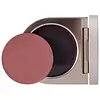What's inside
What's inside
 Key Ingredients
Key Ingredients

 Benefits
Benefits

 Concerns
Concerns

 Ingredients Side-by-side
Ingredients Side-by-side

Methyl Methacrylate Crosspolymer
Dimethicone
EmollientTriethylhexanoin
MaskingMica
Cosmetic ColorantLauroyl Lysine
Skin ConditioningDimethicone/Vinyl Dimethicone Crosspolymer
Skin ConditioningAluminum Hydroxide
Emollient1,2-Hexanediol
Skin ConditioningSilica
AbrasiveNiacinamide
SmoothingButylene Glycol
HumectantPropanediol
SolventHyaluronic Acid
HumectantHydrolyzed Hyaluronic Acid
HumectantSodium Hyaluronate
HumectantTitanium Dioxide
Cosmetic ColorantCI 19140
Cosmetic ColorantCI 15850
Cosmetic ColorantMethyl Methacrylate Crosspolymer, Dimethicone, Triethylhexanoin, Mica, Lauroyl Lysine, Dimethicone/Vinyl Dimethicone Crosspolymer, Aluminum Hydroxide, 1,2-Hexanediol, Silica, Niacinamide, Butylene Glycol, Propanediol, Hyaluronic Acid, Hydrolyzed Hyaluronic Acid, Sodium Hyaluronate, Titanium Dioxide, CI 19140, CI 15850
Ricinus Communis Seed Oil
MaskingPentaerythrityl Tetraisostearate
EmollientCaprylic/Capric Triglyceride
MaskingCopernicia Cerifera Wax
Oryza Sativa Bran Wax
Skin ConditioningHydrogenated Vegetable Oil
EmollientSynthetic Fluorphlogopite
Silica
AbrasiveIsononyl Isononanoate
EmollientLauroyl Lysine
Skin ConditioningEuphorbia Cerifera Wax
Squalane
EmollientSodium Hyaluronate
HumectantCeramide Ng
Skin ConditioningRosmarinus Officinalis Leaf Extract
AntimicrobialHelianthus Annuus Seed Oil
EmollientTocopherol
AntioxidantCaprylyl Glycol
EmollientHydrogenated Castor Oil
EmollientSorbitan Tristearate
Emulsifying1,2-Hexanediol
Skin ConditioningTropolone
Skin ConditioningAluminum Hydroxide
EmollientTin Oxide
AbrasiveMica
Cosmetic ColorantCI 77891
Cosmetic ColorantIron Oxides
CI 15850
Cosmetic ColorantCI 45410
Cosmetic ColorantRicinus Communis Seed Oil, Pentaerythrityl Tetraisostearate, Caprylic/Capric Triglyceride, Copernicia Cerifera Wax, Oryza Sativa Bran Wax, Hydrogenated Vegetable Oil, Synthetic Fluorphlogopite, Silica, Isononyl Isononanoate, Lauroyl Lysine, Euphorbia Cerifera Wax, Squalane, Sodium Hyaluronate, Ceramide Ng, Rosmarinus Officinalis Leaf Extract, Helianthus Annuus Seed Oil, Tocopherol, Caprylyl Glycol, Hydrogenated Castor Oil, Sorbitan Tristearate, 1,2-Hexanediol, Tropolone, Aluminum Hydroxide, Tin Oxide, Mica, CI 77891, Iron Oxides, CI 15850, CI 45410
Ingredients Explained
These ingredients are found in both products.
Ingredients higher up in an ingredient list are typically present in a larger amount.
1,2-Hexanediol is a synthetic liquid and another multi-functional powerhouse.
It is a:
- Humectant, drawing moisture into the skin
- Emollient, helping to soften skin
- Solvent, dispersing and stabilizing formulas
- Preservative booster, enhancing the antimicrobial activity of other preservatives
Aluminum Hydroxide is a form of aluminum. It can be naturally found in nature as the mineral gibbsite. In cosmetics, Aluminum Hydroxide is used as a colorant, pH adjuster, and absorbent.
As a colorant, Aluminum Hydroxide may add opacity, or reduce the transparency. Aluminum hydroxide is contains both basic and acidic properties.
According to manufacturers, this ingredient is an emollient and humectant. This means it helps hydrate the skin.
In medicine, this ingredient is used to help relieve heartburn and help heal ulcers.
There is currently no credible scientific evidence linking aluminum hydroxide in cosmetics to increased cancer risk.
Major health organizations allow the use of aluminum hydroxide in personal care products and have not flagged it as a carcinogenic risk at typical usage levels.
Learn more about Aluminum HydroxideCi 15850 is the pigment color red. It is an azo dye and created synthetically.
Azo dyes need to be thoroughly purified before use. This allows them to be more stable and longer-lasting.
This ingredient is common in foundations, lipsticks, and blushes. This color is described as brown/orangey red.
It has many secondary names such as Red 6 and Red 7. According to a manufacturer, Red 6 usually contains aluminum.
Learn more about CI 15850This ingredient comes from a fatty acid (lauric acid) and amino acid (lysine). It is used to add a silky feel to cosmetics.
According to a manufacturer, its fatty acid base leaves a silky feeling on the skin. It also has emollient properties because of this. Emollients help soften skin by preventing water from evaporating.
Lauroyl lysine is barely soluble in water.
Learn more about Lauroyl LysineMica is a naturally occurring mineral used to add shimmer and color in cosmetics. It can also help improve the texture of a product or give it an opaque, white/silver color.
Serecite is the name for very fine but ragged grains of mica.
This ingredient is often coated with metal oxides like titanium dioxide. Trace amounts of heavy metals may be found in mica, but these metals are not harmful in our personal products.
Mica has been used since prehistoric times throughout the world. Ancient Egyptian, Indian, Greek, Roman, Aztec, and Chinese civilizations have used mica.
Learn more about MicaSilica, also known as silicon dioxide, is a naturally occurring mineral. It is used as a fine, spherical, and porous powder in cosmetics.
Though it has exfoliant properties, the function of silica varies depending on the product.
The unique structure of silica enhances the spreadability and adds smoothness, making it a great texture enhancer.
It is also used as an active carrier, emulsifier, and mattifier due to its ability to absorb excess oil.
In some products, tiny microneedles called spicules are made from silica or hydrolyzed sponge. When you rub them in, they lightly polish away dead skin layers and enhance the penetration of active ingredients.
Learn more about SilicaSodium Hyaluronate is hyaluronic acid's salt form. It is commonly derived from the sodium salt of hyaluronic acid.
Like hyaluronic acid, it is great at holding water and acts as a humectant. This makes it a great skin hydrating ingredient.
Sodium Hyaluronate is naturally occurring in our bodies and is mostly found in eye fluid and joints.
These are some other common types of Hyaluronic Acid:
Learn more about Sodium Hyaluronate